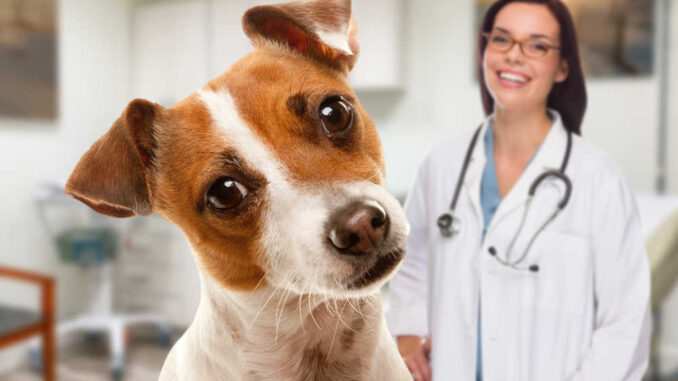
This article was updated on June 24th, 2023
Yeast infections are common issues with our dogs. Large numbers of yeast can cause problems in nearly all parts of a dog’s body, including the vagina and vulva of females. Young or old, spayed or intact, it doesn’t matter when it comes to vaginal yeast infections, making this a common problem for veterinarians everywhere.
What is a Vaginal or Vulvar Yeast Infection in Dogs?
Yeast is a form of fungi and a normal inhabitant of a dog’s, and our, skin. When a pup is healthy, the immune system keeps those yeast numbers balanced so that they don’t cause any problems. However, when something happens to affect that delicate balance, yeast can reproduce out of control and overpopulate the skin, leading to an infection.
The ideal environment for yeast is warm, moist areas. This makes places like the ear canal, skin folds and between the toes the perfect places for them to reproduce. Other great places for yeast to grow out of control are the female reproductive parts.
In females, the vulva is the external part of the reproductive tract. It consists of a couple of folds of skin located just under the anus. The vulva opens into the vagina, which is present even in spayed females. Both of these areas are warm, moist, and even dark, making them ideal yeast habitats. While a few yeast in these areas are okay, lots of them can actually cause quite a bit of discomfort in the form of inflammation, redness, swelling, and itching.
How to Tell if Your Dog Has a Vaginal Yeast Infection
As we said, the overproduction of yeast leads to inflammation of the skin. That inflammation, when in the vagina or vulva, causes redness, swelling, and itching. A dog with a vaginal yeast infection by show these signs by:
- Licking the genital area
- Scooting or rubbing her hind end on the ground
- Frequently trying to urinate
- Vaginal discharge that may be cloudy and white, bloody, or foul smelling
- Attracting males
- Redness and swelling of vulva
Again, all of these signs simply point to some kind of irritation of the vagina, vulva, or urinary tract. It will take a veterinary diagnosis to confirm that a yeast infection is in fact what’s behind the signs.
What Causes Vaginal and Vulvar Yeast Infections in Dogs?
Since yeast are normally a part of your dog’s vagina and vulva, it may be hard to understand how they could become a problem. In dogs with a healthy immune system, excess yeast are rounded up and terminated. A healthy balance is important to keep the skin from becoming aggravated and inflamed. When there is an issue with the immune system or the reproductive tract, those yeast numbers can escalate until they tip the healthy balance toward infection and inflammation.
1. Age
A thing that may sway this healthy balance is age. Being very young or very old affects how well the immune system functions. Puppies with undeveloped immune systems are at risk of vaginal and vulvar yeast infections as well as urinary tract infections. On the other hand, our senior pups may also have issues since their immune system may not as up to snuff as it was during their younger days.
2. Illness
If you think of the immune system as the body’s army, then it would make sense that it can become overwhelmed during times of attack. There’s only so many soldiers to go around. Sometimes when a dog is sick with another illness, her immune army can get overworked to the point it can’t handle its normal duties, such as patrolling the yeast numbers, allowing them to reproduce out of control.
3. Antibiotics
Antibiotics are a good thing when it comes to killing off unwanted bacteria. However, some antibiotics can be pretty indiscriminate and kill harmless bacteria as well. It’s these harmless bacteria that live side-by-side with yeast in a dog’s vagina and on her skin. They compete with yeast for resources and help to balance each other out. When those bacteria are killed off, it allows more yeast to move into their place, potentially causing an infection.
4. Allergies
Allergies are a sure sign of a malfunctioning immune system. Whether the allergies are to things in the environment or something in the food, they cause the immune system to act up and focus its attention on other things besides controlling the yeast population.
5. Other Causes
Anything affecting the immune system has the potential to contribute to a dog getting a vaginal or vulvar yeast infection. This can be a hormonal imbalance, diabetes, or even diet. Things affecting the reproductive tract health can also contribute. Trauma from mating, changes from a heat cycle, vaginal tumors or abnormalities, and fecal contamination from unsanitary conditions may contribute as well.
Are There Any At-Home Treatments for Vaginal or Vulvar Yeast Infections in Dogs?
Since a yeast infection of the vagina or vulva looks similar to other types of infections and issues with these areas, you aren’t going to necessarily know what your dog is dealing with a yeast infection. Instead, she could have a bacterial infection, urinary tract infection, or even a vaginal tumor. Therefore, it’s not recommended that you try to treat a vaginal yeast infection at home.
You may come across some at-home cure-alls for yeast infections of all types. This includes feeding probiotics, applying coconut oil, and vinegar rinses. However, none of these remedies are proven effective and some may even do harm, so be sure to consult your veterinarian before trying anything first.
Can I Use Over-the-Counter Yeast Infection Medicine?
Again, you aren’t going to know for sure that your dog is suffering from a yeast infection without a veterinary diagnosis, so you shouldn’t use any medication, over-the-counter or otherwise.
Should I Clean My Dog’s Vulva?
For most healthy dogs, you won’t ever have to pay special attention to her genitals. Other dogs are going to need a little more in the way of cleaning. This is especially true if you have a pup that is overweight or overly hairy to keep the genital area clean. Extra fat or skin around the vulva can increase the chances of a vulvar yeast infection because you’re increasing the warm, moist areas where yeast like to live. Long or thick hair around the vulva can have the same effect.
For these dogs, keeping the vulva clean can be done with a little extra grooming. Some dogs may need a sanitary clip to keep the hair shorter and to prevent feces and urine from becoming trapped in the hair. Extra brushing to prevent matting may be needed as well.
You can clean the vulva, if need by, using warm water and a mild soap. It’s easiest to do this during a regular bath. Just wash the vulva as you would other parts of the body, just try not to get soap up inside. Thoroughly rinse to remove all suds and be sure to dry the area completely so that moisture can’t build up.
In between baths, use a pet grooming wipe to clean the area. Just make sure the wipe doesn’t cause any irritation.
Can a Vaginal or Vulvar Yeast Infection Go Away on its Own?
There is the possibility that a mild vaginal yeast infection may go away on its own once the immune system gets back to normal. However, some cases, if left untreated, can lead to more severe problems. If you suspect that your dog has a yeast or any other infection, you’re better off to see your veterinarian.
When to See a Vet for Vaginal and Vulvar Yeast Infections in Dogs
Since vaginal yeast infections show up similar to other types of infections and issues with the reproductive and urinary tract, you’ll want to see a vet any time you notice signs. You won’t be able to tell whether the issue is yeast related or not. It doesn’t take long for a mild infection to become more severe and difficult to treat, plus your pup will want you to ease the discomfort as soon as possible.
Be sure to see your veterinarian if you notice your pup licking or rubbing her genital area. See a vet for any discharge from the vulva, especially if it’s bloody or has an odor. Frequent urination and irritation to the skin are other reasons to make an appointment.
Diagnosis
When we said that you won’t be able to tell if your dog has a yeast versus other type of infection, you should know your vet won’t be able to either. Not until they can collect some samples and look at them under a microscope. To do this, the vet will use a swab to collect samples of discharge or from the vagina to look for yeast or bacteria under the microscope. They may also want to do blood work and imaging to check your dog’s immune system or to look for issues in the reproductive tract.
Treatment
From there, the yeast infection will be treated with antifungal medication. These are often pills that will need to be given for 7-14 days, sometimes longer. If there is an underlying cause determined, that will need to be treated as well. This may include medications to control hormonal imbalances, insulin for diabetes, or antibiotics for urinary tract infections.
Most dogs will respond well to antifungal medications, but be aware that even though yeast infections are easily treated, they can often recur. So, be sure to speak to your vet about any underlying issues that your pup has that may increase the chances of recurrence.
Cost
Most simple vaginal yeast infections are going to be fairly inexpensive to treat. You’re most likely looking at an exam, some diagnostics and a couple weeks of treatment. It may cost $100-$150. More complicated cases that involve underlying conditions may cost you more in further diagnostics and treatment.
FAQ
How long does it take for vaginal yeast infections to heal?
Most uncomplicated vaginal or vulvar yeast infections will heal within a couple of weeks with proper treatment. Cases that are caused by an underlying condition, such as diabetes, may take longer or recur if the underlying cause isn’t properly addressed.
What if my dog is still having issues after veterinary treatment?
If your dog’s vaginal yeast infection doesn’t respond to veterinary treatment, it may be time to look into underlying causes and further diagnostics. She may need further blood tests or imaging to check for hormonal imbalances, immune problems, or issues with the reproductive tract that weren’t caught the first time around.
Related posts:
Disclaimer: This website's content is not a substitute for veterinary care. Always consult with your veterinarian for healthcare decisions. Read More.



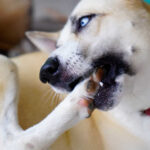
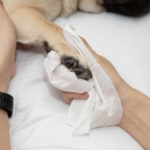
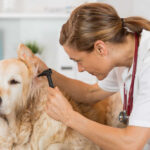
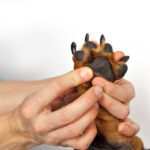
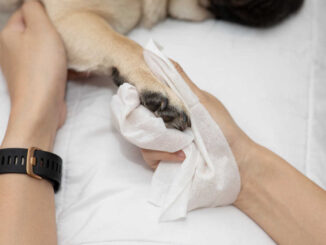
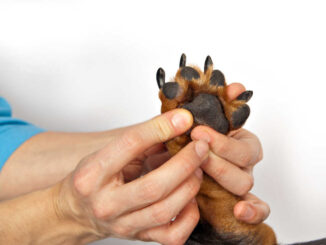
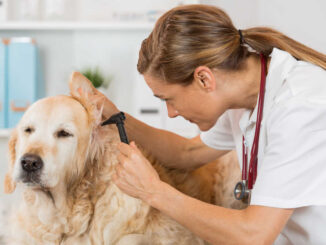
Thank you for being so detailed and specific. Information is power.